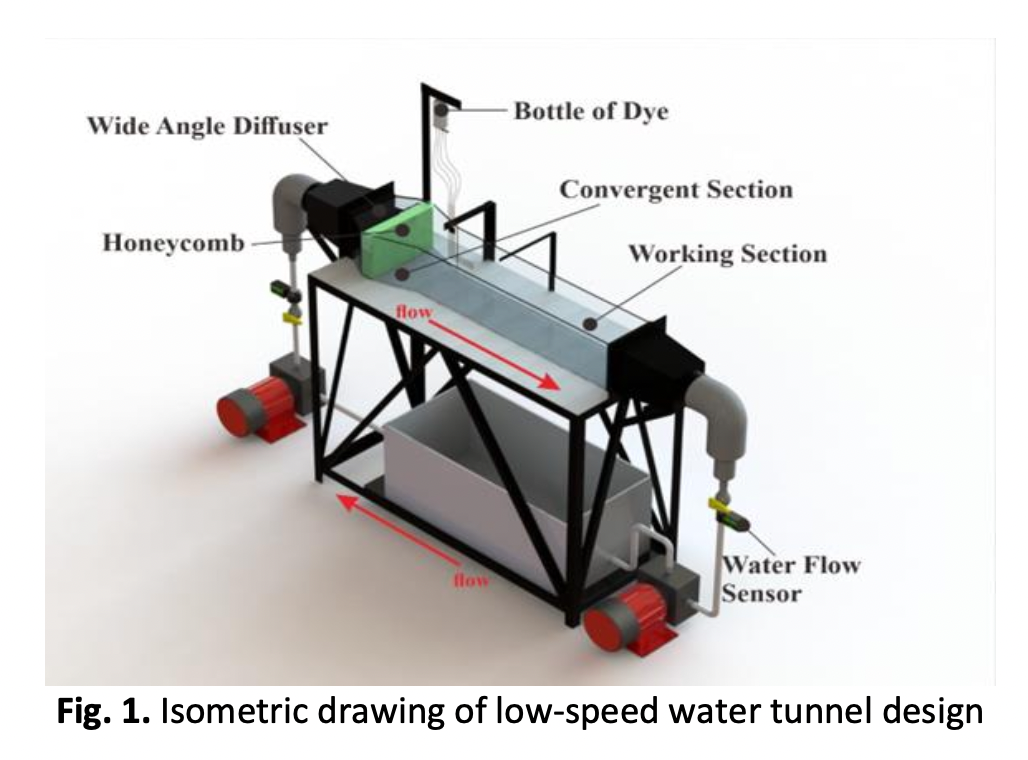Laboratory-Scale Low-Speed Water Tunnel: Comparison of Experimental Flow Visualization and Computer-Aided Simulation
DOI:
https://doi.org/10.37934/arfmts.107.1.142164Keywords:
Computational fluid dynamics, flow visualization, simulation, water tunnelAbstract
This study aimed at developing the laboratory-scale low-speed water tunnel design by first evaluating the effect of varying the number of wide-angle diffuser vanes and then confirming flow visualization against object geometries tested by experiments and computer-aided simulation. The low-speed water tunnel design in this study consists of a wide-angle diffuser, a honeycomb, a convergent section, and a working section. To ascertain the laminar flow of water would act in the experiment, a prior simulation using 3, 6, and 12 vanes and without a vane was conducted. Some geometries, including tube, triangle, aerofoil, and car models have been tested and then compared to the experimental results. The results indicate that the twelve vanes diffuser is more effective in minimizing turbulent flow and producing a streamlined pattern in the water tunnel. Laminar flow with a Reynolds number of 2238 and flow velocity of 0.008 m/s was obtained in the working section. The flow visualization by experiment and computational fluid dynamics simulation was almost similar.
Downloads

































